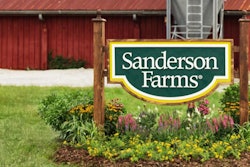
New Zealanders will soon be paying around 10% more for chicken products from leading producer Tegel Foods, reports Stuff.
According to the firm’s general sales manager Yvonne Van Nes, the increase is needed to cover recent rising costs of production — particularly feed, labor, and fuel.
In the face of these rising costs, retail prices have been in decline for several years in New Zealand. Since 2014, chicken breast prices have fallen from around NZD17 per kilo to as low as NZD7 (US$4.90) today, she said.
In a subsequent report, the same source noted that high prices for red meats are causing New Zealanders to eat more poultry meat. Between 2000 and 2010, it states, poultry consumption increased by 18%. By 2020, uptake had jumped by a further 33%.
Data from Stats NZ cited by Stuff indicates that the retail price of a kilo of chicken breast meat was around NZ$17 in June of 2014. In the same month of this year, the weighted average price was NZ12.34.
Tegel’s transparency over the issues of its costs should be commended, said the chief executive of the Food and Grocery Council, Katherine Rich. As well as the rising costs of insurance and energy experienced by many businesses, Tegel is also challenged by more expensive feeds. Rich puts this down, at least in part, to the difficulties of getting goods into New Zealand.
Recent developments in New Zealand’s poultry sector
Between 2009 and 2018, the nation’s chicken meat production achieved remarkable growth, according to figures from the Poultry Industry Association of New Zealand. From around 32,000 metric tons (mt) per quarter, output rose to 64,000mt by the end of 2018. Following a period of contraction — likely exacerbated by the coronavirus COVID-19 pandemic — national chicken meat output almost completely recovered by March of this year.
The latest figures published for the quarter to March of 2021 indicate the highest output for a three-month period since 2018 — 62,060mt. Average deadweight jumped to 2.1kg, although the number of birds slaughtered was down slightly year-on-year at 29.51 million.
While the number of birds slaughtered in 2020 was down slightly from the previous year at 118.7 million, national poultry meat output decreased by 3.8% year-on-year. According to the Association, average deadweight per birds continued a slow reduction over recent years to 1.83kg. The nation’s total production in 2020 was almost 217,200 metric tons — the lowest figure since 2016.
Over the same 11-year period, the country’s poultry food price index has changed almost as dramatically as chicken production. The index is based on June 2017 levels with a score of 1,000.
Following a generally upward trajectory from the start of 2009 to 2015, the index slumped from around 1550 to 1325 by mid-2017. By the end of that year, a further collapse took the index to around 950. It has remained under or only marginally above 900 for the past year.
Last month, New Zealand’s Ministry of Primary Industries announced it would expand its Salmonella testing program. This decision followed the detection of a particular strain of this foodborne pathogen at a small number of egg farms. The strain has been linked to an increase in human illness cases in the country.
More on Tegel Foods
Founded in 1961, Tegel Foods now has 2,300 employees across New Zealand, according to the firm’s own web site.
With annual slaughterings of 58 million birds, Tegel Foods ranks fourth in terms of poultry meat production in Oceania, according to WATTPoultry.com’s Top Poultry Companies database.
Tegel Foods is New Zealand's largest poultry producer with 50% market share for chicken, and 90% for turkey. Strong exports also have driven recent growth.
A fully integrated poultry business, the company has breeder flocks, hatching, feed milling, slaughter, processing, further processing and cooking operations — all within New Zealand.















